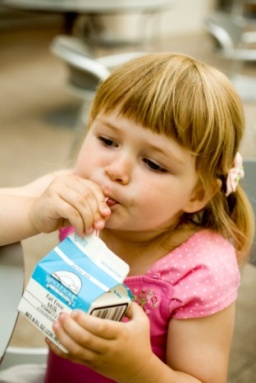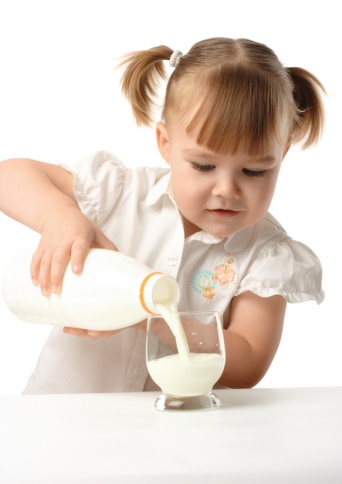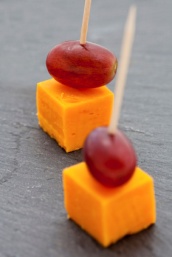Attachment C2 - Milk Messages and Supporting Content Handouts ENGLISH
Attachment C2 - Milk Messages and Supporting Content Handouts ENGLISH - 2012 12 12.docx
Generic Clearance to Conduct Formative Research
Attachment C2 - Milk Messages and Supporting Content Handouts ENGLISH
OMB: 0584-0524
Site: ______________________________ OMB Control #0594-0524
Date: _____________________________ Expiration Date: 04/30/2013
OMB
BURDEN STATEMENT:
According to the Paperwork Reduction Act of 1995, no persons
are required to respond to a collection of information unless it
displays a valid OMB control number. The valid OMB control
number for this information collection is 0584-0524. The time to
complete this information collection is estimated as 70 minutes,
including the time for reviewing instructions and completing the
information.
Attachment C2: Message Handout – Milk Messages and Supporting Content
MC1.

There’s no power like Mom Power. You are a positive influence in your children’s lives. Help them develop healthy eating habits for life. Offer them fat-free or low-fat (1%) milk and yogurt at meals and snacks.
MC2.

Mom is a child’s first teacher.
You teach by doing. Every time you drink fat-free or low-fat (1%) milk, or eat low-fat yogurt, you’re giving your kids a lesson in how to eat for better health. It’s a lesson they can use for all their lives.
MC3.

Strong bodies need strong bones.
Give your preschooler fat-free or low-fat (1%) milk or yogurt at meals and snacks. They’re packed with vitamins, minerals, and protein for strong, healthy bones.
MC1a.
O ne
Mom’s Story:
ne
Mom’s Story:
Using “Mom Power” for Good
As a mom, it’s my job to make sure my family gets the foods they need every day – like milk. That’s why I serve fat-free or low-fat (1%) milk to my kids. I also keep low-fat or fat-free yogurt and cheese in the house for healthy snacks. This helps my kids eat better, develop healthy habits, and grow strong.
MC1b.
One
Mom’s Story:
F at-free
and Low-fat (1%) Milk Are Healthier Than Whole Milk. Who Knew?
at-free
and Low-fat (1%) Milk Are Healthier Than Whole Milk. Who Knew?
Milk helps kids grow strong. So it’s important to me that my kids get the milk they need every day. I used to believe that fat-free and low-fat milk were not as healthy as whole milk. Then I learned that they have the same calcium, protein, vitamin D, and other nutrients, just less fat. The saturated fat in other milk increases the risk of heart disease. So, my pediatrician told me that after age 2, kids don’t need that fat. That’s why I made the transition to low-fat (1%) milk. First I switched to 2% milk, then after a couple of weeks I switched to 1%. The kids didn’t even notice.
MC1c.
One
Mom’s Story:
 Making the Switch to Fat-Free or
Low-Fat (1%) Milk
Making the Switch to Fat-Free or
Low-Fat (1%) Milk
My little girl is growing up so fast! She just had her second birthday. Last week, her doctor told me I should change her milk to fat-free or low-fat (1%) milk. He said that now that she is 2, the saturated fat in whole milk is no longer recommended, and that saturated fat increases the risk of heart disease. He explained that fat-free and low-fat milk have the same vitamins and minerals as whole milk – just without the fat. It's also the same milk she will get at school when she is older. Since everyone in my family is 2 or older now, I'm buying 1% fat milk for the whole family. I’ll try fat-free milk after we get used to drinking low-fat milk. I like knowing that fat-free and low-fat milk can help keep our hearts healthy. It also feels good to know I’m helping my daughter learn a healthy habit.
MC1d.
W hen
it comes to keeping it fun, here are some ideas that work for us:
hen
it comes to keeping it fun, here are some ideas that work for us:
Keep fat-free or low-fat (1%) milk in the refrigerator for snacks. A frosty glass of milk tastes great and is an easy way to refuel kids after play.
Make it special: On cold days, we enjoy hot milk with cinnamon and a touch of vanilla extract.
Prepare snacks and meals together: Once a week, the kids and I make smoothies. We blend together low-fat (1%) milk, their favorite fruits or 100% fruit juice, and fat-free yogurt.
Mix milk, cheese, and yogurt with other foods. I put plain fat-free yogurt on baked potatoes. It tastes like sour cream and my kids don’t know the difference. When I make oatmeal, I use low-fat (1%) milk instead of water for great taste and nutrition. Occasionally, I sprinkle low-fat cheese on foods like chicken, whole-grain noodles, and vegetables.
MC1e.
Moms often ask:
Q .
How much milk does my family need each day?
.
How much milk does my family need each day?
A: The amount of milk we need each day depends on age. Younger kids need 2 cups, while older kids and adults need 3 cups. Here are daily recommendations by age:
Age |
Daily Amount Recommended |
Children ages 2-3 |
2 cups |
Children ages 4-8 |
2 ½ cups |
Kids ages 9-18 |
3 cups |
Adults |
3 cups |
Q. Do my kids get enough milk at school?
A: Probably not. Most kids only get 1 cup (8 ounces) of low-fat milk as part of a school lunch. So, to get the recommended amount of milk each day, many kids need to have some at home, too.
MC1f.
Q .
How can I help my family get the milk they need each day?
.
How can I help my family get the milk they need each day?
A: Try to make milk a part of the meals and snacks kids have at home. A cold glass of milk goes great with dinner, and after school or play. Offer foods made from milk – like low-fat or fat-free yogurt – as snacks and desserts. Eight ounces of yogurt is about the same as a cup of milk. You can also try small amounts of low-fat cheese as snacks. About 1½ - 2 ounces of most types of hard cheese is about the same as a cup of milk. Try cutting an eight-ounce block of cheese into eight equal, bite-sized pieces—each piece will be approximately 1 ounce. Plus, a block of cheese is usually less costly than pre-sliced cheese. If you buy sliced cheese, count each slice as about 1/3 cup of milk. Here are other ideas – check those you plan to try.
MC1g.
Give Them the Milk They Need |
|
|
Tried It! |
|
|
|
|
|
|
|
|
|
|
MC2a.
Fat-Free and Low-Fat (1%) Milk Have Nutrients Everyone Needs
Did you know that milk is loaded with vitamins, minerals and protein, with nine (9) key nutrients? Better yet, fat-free and low-fat (1%) milk still deliver this nutrition, just without the extra fat that is in whole and reduced-fat (2%) milk. But many kids are not getting enough milk to keep their bodies growing strong. Here’s what fat-free and low-fat milk and the nutrients they contain can do for your family:

a
d.
Milk
helps muscles move and refuels muscles after play.


Your
kids and you need calcium and vitamin D for strong bones.

e.
Fat-free
and low-fat (1%) milk are heart-healthy. 

The
calcium in milk helps keep teeth strong for a beautiful smile.

f.
Protein
and other nutrients in milk helps kids grow and build muscles and
other tissue.
Milk
is loaded with nutrients, such as potassium and phosphorus that kids
and adults need for good health.



Flex your Mom Power and serve fat-free or low-fat (1%) milk or yogurt to your family for a lifetime of healthy eating. Studies show that adults who drink milk are less likely to have heart disease, type 2 diabetes and high blood pressure.
MC3a.
M oms
often ask:
oms
often ask:
Q:
Does fat-free and low-fat (1%) milk deliver the same good nutrition
as whole milk?
A: Yes. Fat-free and low-fat (1%) milk contain the same vitamins and minerals, like calcium, potassium, magnesium, vitamin D and others needed to keep the body growing strong and healthy.
MC3b.
Q:
Why should I switch from whole milk to fat-free or low-fat (1%)
milk?
A: Fat-free and low-fat (1%) milk are better for the health of you and your children. They deliver the same nutrients as other milk without the saturated fat. The saturated fat in other milk increases the risk of heart disease. Plus, fat-free and low-fat milk have fewer calories. And controlling calorie intake helps manage body weight.
MC3c.

Q: My family has been drinking whole milk for years. How will I get them to switch to low-fat milk?
A: Try these tips to help make the switch to low-fat milk easy for you and your family:
Take it slow. If your young child or family is drinking whole milk, first change to reduced-fat (2%) milk for a few weeks, then switch to low-fat (1%) milk. Later, you can try fat-free milk.
Try low-fat yogurt. If some family members don’t like milk, try offering low-fat or fat-free yogurt.
Try different forms of low-fat cheese. There are many kinds you can try. For example, start with low-fat cheddar – it’s delicious melted on a whole-wheat bagel with a little jam.
Closing Question
Of all of the ideas we talked about this evening, which one would you be most likely to try in your own household or to tell a friend to try?
| File Type | application/vnd.openxmlformats-officedocument.wordprocessingml.document |
| File Title | CMOM Healthy Living Project Pre- Post Questionnaire |
| Author | Martha |
| File Modified | 0000-00-00 |
| File Created | 2021-01-30 |
© 2025 OMB.report | Privacy Policy
